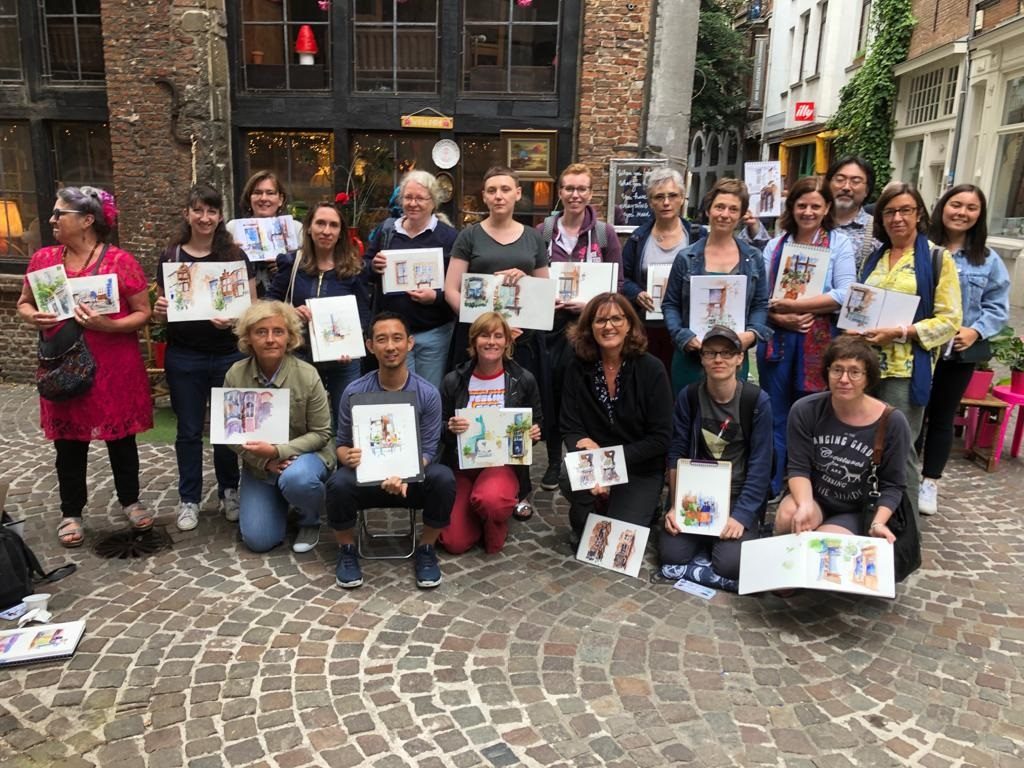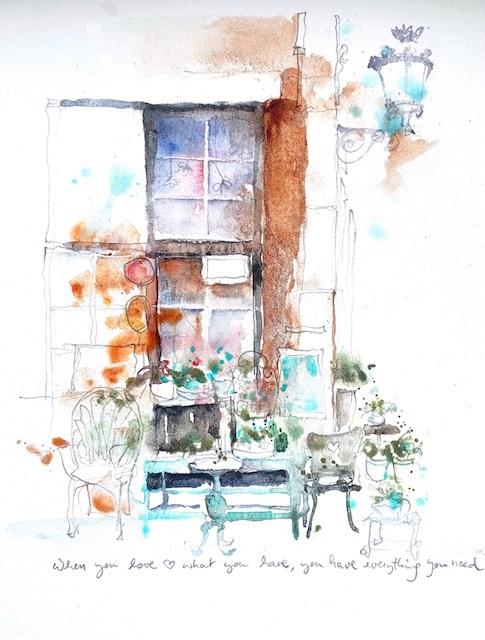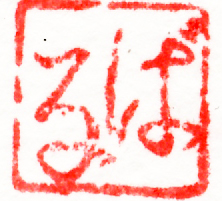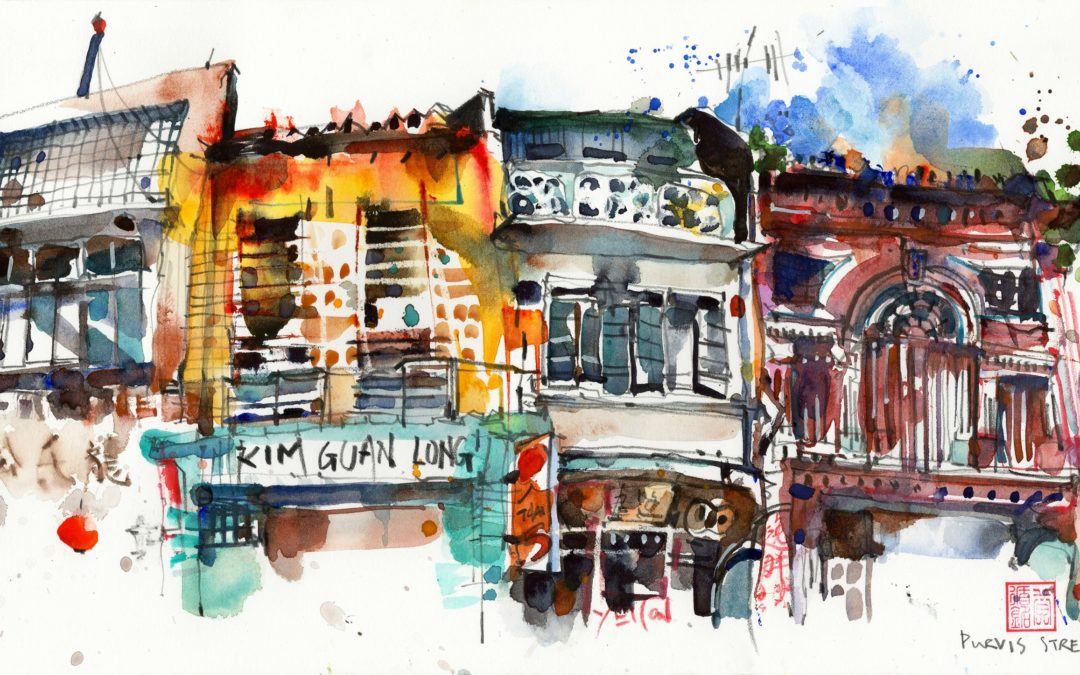Watercolour sketching workshop with Paul Wang
As Paul Wang was in Europe for the symposium I hosted a workshop for him in Antwerp and a sketchcrawl in Ghent.
We were all very excited to learn from him.
Paul is a very generous teacher. I share a video from the workshop and some takeaways, but if you have the chance to take one of his workshops please go for it, because you’ll learn so much !
Actually the most important lesson is that it’s all about PLAYING! Are you playing or struggling with your sketches? Most of the time I’m struggling and freaked out to make a “bad” drawing…
This workshop was about watercolour textures. We all got wonderful granulating colours from Daniel Smith, and we played to obtain special textures. They’ll make your watercolour more lively. Even for more advanced watercolourists among us it was interesting to do these exercises, as we tend to forget this when we’re in the flow of our sketching.
He makes great sketches with pencil and watercolour, full of splashy playfulness.
Most of the time I start first to draw, and then I put the colours. That makes often quite a stiff drawing in the end.
In this workshop we tried to paint and draw at the same time: PAINT-DRAW-PAINT – PAINT -DRAW -PAINT -DRAW – PAINT , whereas usually I DRAW-DRAW-DRAW- PAINT-PAINT-PAINT !
His brush and his pencil are like dancing over the paper! Or maybe it’s the brush dancing with the pencil, like a tango… A joy to watch! When the pencil slides through the wet paint, it leaves a trail of colour behind for a while. So beautiful……………..
A remark about the subject: chose something with life in it, even with some mess: like Paul chose for this workshop a wonderful flowershop full of life and clutter. Clutter means human activity and is more interesting then something neat. Make the clutter your focus point.
Don’t forget the shadows. The shadows give life to your painting.
Place the textures and shadows in the right spot to attract attention to your focal point: what is the most important subject in your painting?
And also interesting: If you’re afraid of the white cleanness of your paper: destroy it by splashing watercolour on it from the beginning! It really helps! Use a big brush with natural hair. Don’t use a synthetic brush if you want beautiful natural splashes. We tried big, medium and small splashes.
Anyway…. so much to learn! In the video below you can admire Paul when he’s painting.
I already asked this, but: “Are you playing enough? How does it feel for your creativity? When are you most free to play?”





Paul is a wonderful tutor..I love to watch his brush dancing over the paper in the little videos I see. I did a workshop with him in Mcr and a demo in Porto
Thank you so much Anne Marie for your comment!
That’s true: his brush is dancing over the paper!!!
Thank you so much for posting this!
Thank you for your comment Barbara
Merci pour la vidéo, j’adore moi aussi le travail de Paul Wang. Une question : à quoi sert la feuille de plastique rouge qu’il vous distribue au début ?
Merci Sophie! La feuille en plastic rouge en fait sert à vérifier les contrastes de valeurs dans ta peinture. Tu peux aussi prendre une photo en noir et blanc avec ton portable et ça fera le même effet
Wonderful Barbara ! Thank you so much for organising this workshop and the sketchwalk. I very much enjoyed both.
This video is great to watch. Thank you again !
Thank you Françoise! Yes I found myself interesting to rewatch because when you’re in the workshop you don’t always notice all the details!
Extra merci Barbara toujours un plaisir à voir et à écouter (quel est le morceau d’ailleurs ?). Le mélange de crayon et d aquarelle me fait aussi penser à la légèreté des traits et directions en apparence non contrôlés de KK en Malaisie.